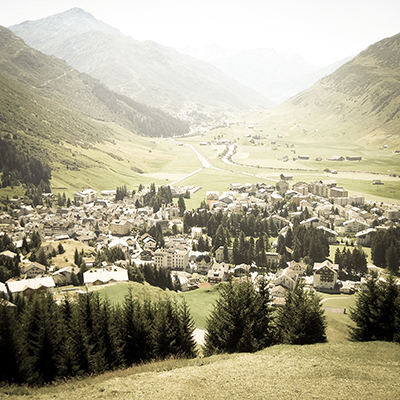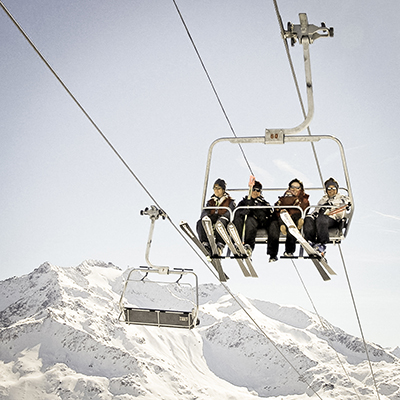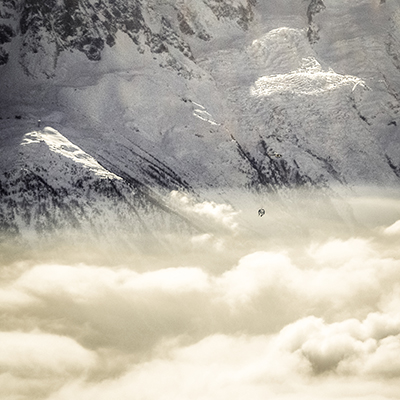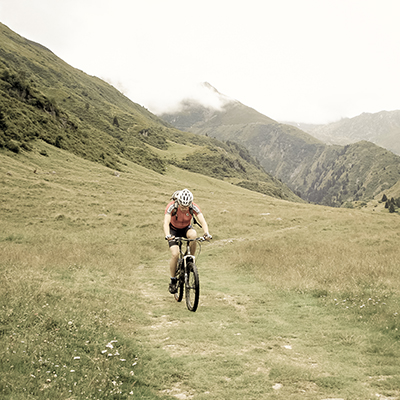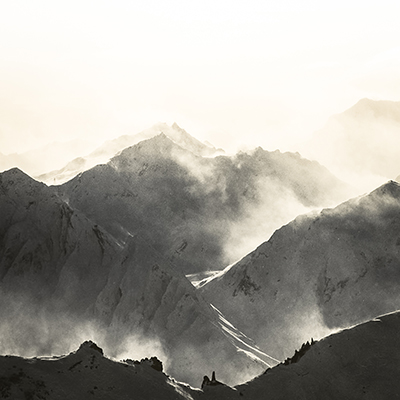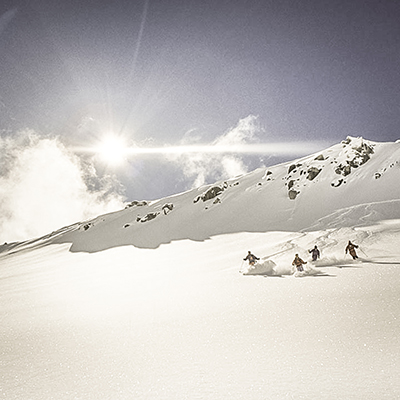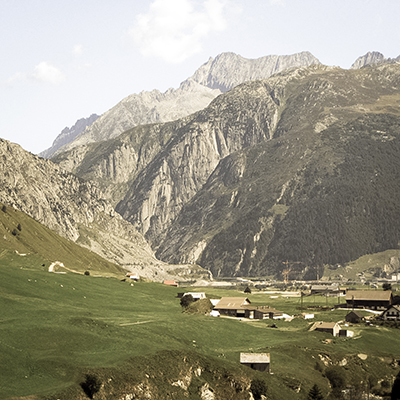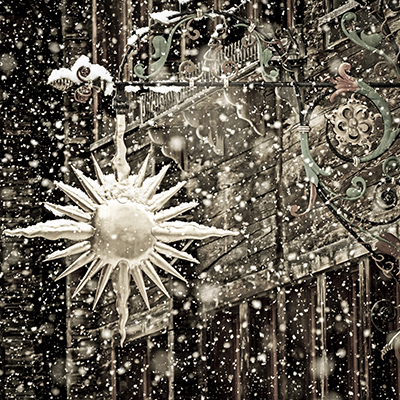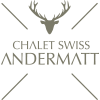past, present & future
It’s the gem of the Urseren Valley: beautiful Andermatt with its 1300 inhabitants, is located in the northern foot of the Gotthard Pass, 1444 meters above sea level. The popular winter sports resort is equally attractive in summer, thanks to its central location between mountains and mountain passes. But Andermatt offers more. For those interested in the past of this magical place, there are many cultural attractions to be discovered in and around the old town with its medieval charm.
Besides shopping opportunities, a stroll through the city will uncover numerous signs and sites of it’s history. In 1799, Andermatt was the scene of a confrontation between Napoleon's troops and those commanded by Russian General Suvorov retreating from northern Italy. All this is reflected in the memorial of Russian soldiers. It is visible from the Devil's Bridge outside the village towards the Schollenen, a steep road down to Lucerne. In the centre of Andermatt, you can visit the house where Suvorov slept one night. The same place currently houses the city museum.
Bear in mind that the Gotthard massif also plays a special role in the military strategy of Switzerland. It is the final bastion where both government and military leadership would withdraw in case of an attack, leaving the vulnerable swiss lowland behind. The vastness of the area bears witness to this. Beneath the mountain, there are tunnels and shelters, able to accommodate large numbers of people for long periods. Andermatt is still home to a number of barracks and military installations (including the hospital, which is operating for civil use), but the presence of the military has been greatly reduced in recent years.
Walking along the main street one is continuously captured by the eighteenth century wooden houses with high gables and wrought iron signs. The Rathaus, City Hall, was rebuilt in 1767 after a fire which destroyed the entire village. The Baroque parish church of St. Peter and St. Paul (1696) contains an altar by Johann Ritz from 1716. A building of 1786 houses the Talmuseum Urseren, the Museum of the Urseren valley. On the road to Altdorf, we travel even further back in time. St. Kolumban, a beautiful Romanesque church was constructed in the thirteenth century but modified several times. It is dedicated to the Irish friar who, together with Saint Gall, introduced Christianity here in the seventh century.
the Arab plan: A truly innovative turning point for the future of this beautiful valley was marked in 2010, thanks to the highly ambitious project of the Egyptian company Orascom Developement, an international leader in the development and management of integrated towns and holiday resort. “Andermatt Swiss Alps” is the brainchild of its well-known manufacturer Samih Sawiris. The company gets exceptionally exemption from the federal law "Lex Koller", which puts restrictions on non-resident ownership of land and property in Switzerland. The exemption allows “Andermatt Swiss Alps” to include six new luxury hotels about 500 large apartments in 42 buildings and 25 luxury villas. All of them are currently under construction. Notably, this is the first project by the company in Europe and it will fit perfectly in the historic village. Moreover, the realisation of more than 700 parking spaces in an area called the podium will free up the city center’s traffic. Andermatt will also be equipped with numerous excellent sport facilities and added infrastructure to the ski area that will connect it to the neighboring resort Sedrun.
climate
Andermatt has an alpine climate. It is highly unlikely that you will spot any artificial snow machines. If you do, it is a rare sight. In fact, snowfalls are frequent and abundant in this valley. It’s cold in winter and warm in summer, which makes it the perfect destination for those exasperated by the heat of the city, who want to enjoy cool days in August. If visiting in summer, however, it’s worth paying close attention to sudden storms, usually in the afternoon, which often burst only minutes after clear and blue skies.
tourism
Looking at the landscape around Andermatt, it is pretty obvious why tourism is flourishing here. The view into the valley is captivating. The eye wanders from houses that are huddled against each other, to the large and barren faces of towering mountains to finally spot, above the village, a triangle of forest, guardian and protector of the village against avalanches and landslides. In summer, Andermatt is the ideal place for hiking and mountain biking, skydiving, mountain climbing, even fishing. The Gotthard region is also the ideal place to start an exploration of the mountain passes of Central Switzerland. They can be travelled with the historic Gotthard post coach or the Furka steam train. The so-called tour of the three passes, which includes the mountain passes of Furka, Grimsel and Susten, offers spectacular views. The tour is 120 kilometers long and can be completed in a day.
During the winter, the whole area is transformed into a magnificent ski arena, with over 30 lifts and 200 kilometers of slopes. It’s a true paradise for lovers of downhill and snowboarding, a specialty for which Andermatt is well known throughout Europe. For those who practice carving, the Gemsstock is a special treat, as it has one of the first alpine slopes designed especially for this sport. Cross-country skiers will find enjoyment on various trails. The 20 kilometre long path between Andermatt and Realp deserves special mention. Get more information here: http://www.skiarena.ch/
not only skiing
the via ferrata Diavolo
From the railway station of Furka-Oberalp Andermatt, 1436 meters above sea level, a spectacular route in the granite rocks awaits. It runs along the grassy Schöllenenschlucht.
Attached to a wire rope, you will follow the route as it rises steeply and airily, offering a gripping views down into the Schöllenen gorge with the old Teufelsbrücke and its modern transport routes, which gradually shrink to toy size. Not the whole of the route is secured, and it is not advisable to go when it is wet, as the grass will make the path slippery.
After reaching the summit on the sidelines of the Tüfelstalboden (approx. 1860 meters), there is a delightful stopping-point below the Uri flag, after which a small path will take you back down to the barracks of Andermatt.
the cultural trail in the Alps
Starting from Göschenen and ending in Andermatt, the culture trail in the Alps offers a spectacle of rare beauty, especially recommended between May and September. The hike leads from lake Geneva to Val Müstair and can be done in stages over a few days.
The Gotthard Pass road, arguably the heart of Switzerland and beautifully set between mountains and rivers, not only offers breathtaking nature but also has historical value. Along the route, in fact, you should visit the church of Wassen, Göschenen, the bridge Häderlins, the Schöllenen Gorge, the monument to Suvarov, the Devil's Bridge and Andermatt.
Bernhard-Russi-Run
Experienced skiers really come into their own on the Gemsstock above Andermatt with its high-Alpine terrain, magnificent panorama and challenging slopes. The highlight is the descent on the Bernhard Russi Run. The route runs from the summit of the Gemsstock, steeply down to the cable car middle station at Gurschen. The route is named after ski racer Bernhard Russi who in the 1970s, achieved legendary success in the Olympic Winter Games and World Championships and was born in Andermatt. He is now a world-renowned ski run architect.
Bann forest of Andermatt and the protective woods Gurschen
This hiking trail provides the hiker with a lot of information about the importance of the Bann forest of Andermatt as protection from landslides or avalanches. In the period from June to September, a gorgeous walk between the trees and plants of this forest will make you appreciate this most precious vegetation afresh. All the plants and trees are described on information panels. Five kilometers of dry stone walls are still standing, built in previous times also for the protection of Andermatt. Starting at intermediate station Gurschen (Andermatt-Gemsstock), you will be hiking via the sign-posted and paneled hiking trail across alpine meadows and through Andermatt's Bannwald (Bann Forest).
In addition, above Andermatt in Gurschen, a carefully treated and cultivated forest is protecting the village from avalanches, landslides and rockfalls. It dates back to 1937, when the first written notice prohibited the felling of trees in the forest. To this day, systematic reforestation are accompanied by protective constructions to ensure that visitors and citizens of Andermatt a joyful and carefree stay.
GET MORE INFORMATION HERE
